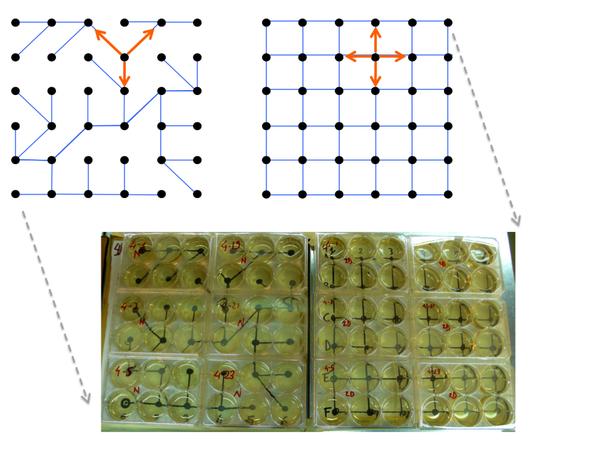Natural river networks are essential for biodiversity

© PhOtOnQuAnTiQuE / Creative Commons
To alter natural waterways is to take a serious risk of endangering species living on the entire length of a river. In a joint project, scientists from EPFL, EAWAG and Princeton University have modeled the flow of organisms living along river networks. Their research will be published this week in the journal PNAS.
Rivers and riverbanks are worlds in themselves; they are teeming with a rich and varied diversity of plant and animal life. But humans are constantly modifying this environment. Enormous projects such as canals, drainage, dams, diversions, and vegetation introduction have been undertaken to reclaim land and divert or obtain access to water.
It is now possible to precisely measure the impact of these alterations on riparian (river zone) biodiversity. Laboratory experiments using microorganisms have demonstrated the relevance of mathematical models that analyze the evolution of populations in these specific situations. The research, published this week in the Proceedings of the National Academy of Sciences (PNAS), was conducted by scientists from EPFL, EAWAG (the Swiss Federal Institute of Aquatic Science and Technology) and Princeton University.
Their conclusions should lead to increased caution when considering the alteration of riverbeds. The researchers showed that the observed biodiversity at a given point in the river is highly dependent on all the smaller tributaries feeding into it, and not uniquely on the specific conditions at that particular location. Channeling a branch of a tributary doesn’t just harm the fauna in that stretch of the tributary, but could have consequences on the entire river, even several kilometers downstream.
A river network in the lab
In their experiment, the scientists used trays, each holding 36 boxes of culture media, into which they distributed ten different species of microorganisms (protozoans and rotifers). In one case, they removed the water and its inhabitants from one box and transferred it to another, following a “dendritic” network based on the real path of an actual river and its tributaries. In the other case, they systematically pipetted it into the four closest boxes. “The organisms chosen allowed us to observe the evolution of populations over 50-100 generations, which took a month,” explains Francesco Carrara, a PhD student in EPFL’s Ecohydrology Laboratory (ECHO) and first author on the paper.


By simplifying the mechanism of the river network in this way, and by eliminating numerous parameters that are impossible to control in a natural setting, the researchers could obtain a precise picture of the direct effects of the network itself on the development and propagation of species. “We were thus able to experimentally prove the relevance of mathematical models that we had already applied to the Mississippi, the Amazon and the Rhine,” says Professor Andrea Rinaldo, director of the ECHO Laboratory.
The main conclusion of the research is that an evolution that follows a branched network ends up yielding a much higher variety of species at locations where waters come together. But that’s not all: populations that live close to the “sources” of each tributary also exhibit a much broader degree of diversity. According to the scientists, maintaining this rich upstream community is indispensable for the development of downstream biodiversity.
It is thus now proven that choking off any of these tributaries or modifying any hydrologic network could compromise the natural balance and downstream biodiversity – a fact that can no longer be ignored by anyone considering water management projects that would alter natural waterways.